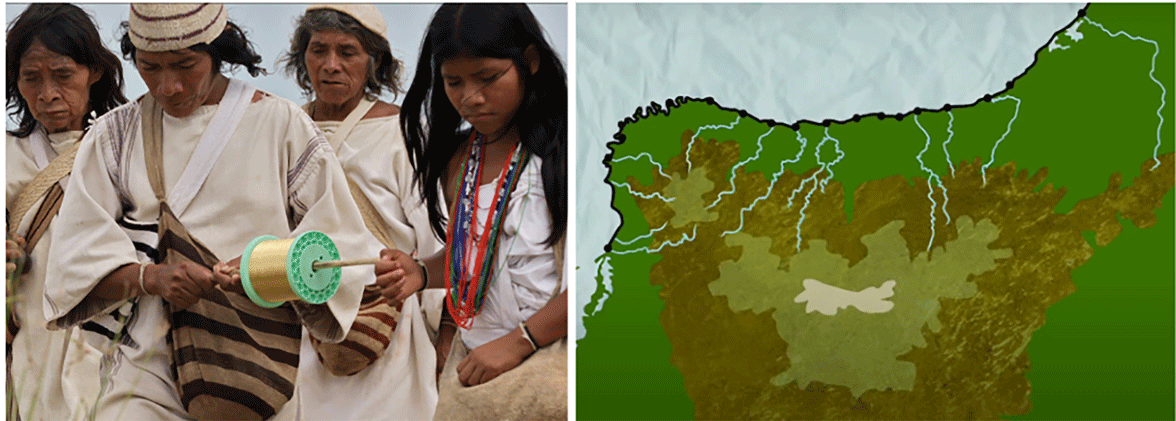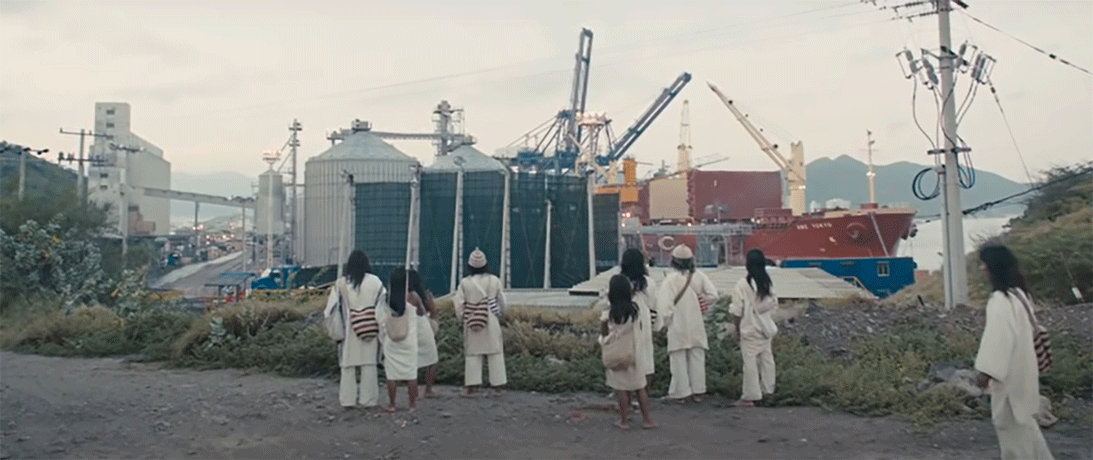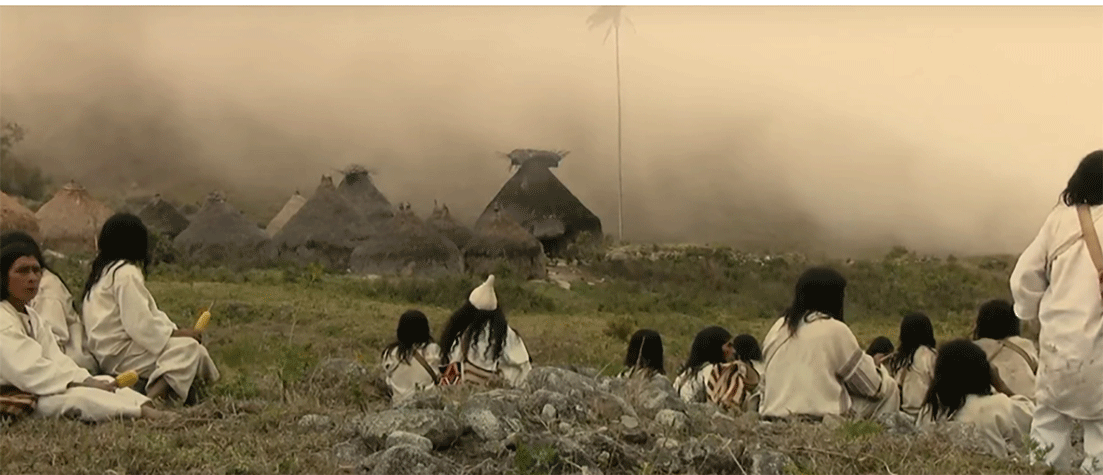You cannot be human without understanding the natural order of the territory. —Hate Kulchavita Boñe
Aluna is a 2012 documentary by the British filmmaker Alan Ereira, produced as a consequence of the previous documentary, From The Heart of The World, in 1990 by the British Broadcasting Corporation (BBC). The documentary takes place in a sacred territory: La Sierra Nevada de Santa Marta (SNS), Colombia, and its main characters are the Kogis, an Indigenous community who consider themselves the guardians of the earth.
In the documentary, Kogi People call attention to a collective awakening about an imminent ecological catastrophe in the world, as we have no understanding of the forces we are unleashing. Therefore, through a pilgrimage, Alan and the Kogis traveled to different Linea Negra’s sacred points with a gold thread, to interweave connections between spiritual and material, the human being and nature, and worldviews and actions. Likewise, the documentary points out some of the United Nations Sustainable Development Goals, such as Life on Land, Peace, Justice and Strong Institutions, and Good Health and Well-being.

For a better understanding of the message given by the Kogi, it is crucial to understand their worldviews and how they understand their territory related to Aluna. For this, the documentary points out: “In the beginning, there was nothing, everything was darkness, everything was Se. Only the mother, Aluna—pure thought without form, began to think and conceived the world as an idea. Then the light came, and the world was reality. All started when time began, and the mother threaded the Black Line, linking particular sites in la Sierra Nevada de Santa Marta.”
The Kogi culture centers their belief in the material world as the physical trace of Aluna's thought world that hides the conscience of nature. That is the guide of their inhabiting and act, governed by The Law of Origin. Therefore, the role of the Mamas, Kogi leaders, is to mediate between the physical world and Aluna to ensure the balance in the land and the universe since La Sierra Nevada is considered the heart and spine of the world.
The Law of Origin is a traditional science of ancestral knowledge’s wisdom for managing everything—the material and spiritual. Its fulfillment guarantees the balance and harmony of nature, the order and permanence of life, and it regulates their inter-ethnic and inter-ecosystem relations.
To ensure the balance, Indigenous Peoples explain that the sacred places of their land are all interrelated, and each one supports the other. If one is destroyed or damaged in any way, the others will die too. Mainly, Kogis want to teach us that everything is interconnected. The earth is a living body; it has veins and blood. Damaging certain places is like cutting off a limb, and the body will be damaged. For that reason, we must take care of the rivers, the trees, the land, the animals and even the stones.
Integrality is a condition of the native peoples. Reinaldo Barbosa emphasizes: "Thinking of the whole to understand the part because the part is, in turn, the whole.” Everything is interconnected, both material and immaterial. In the same way, the flow of water is a flow of thought, where nature and culture are hybridized in an energetic life circuit.
La Sierra Nevada is a human body for Indigenous Peoples, where the snowy peaks represent the head and center of the world; the lagoons of the páramos, the heart; the rivers and the streams, the veins; the earth layers, the muscles; and the grasses, the hair. With this base, the entire geography of the sierra is a sacred space. The earth is the mother's body with blood and breath, and Kogi people hear it, which is why they are concerned and call to protect and preserve it.
Even though UNESCO declared the Sierra Nevada de Santa Marta as a Reserve of the Biosphere of Man and of Humanity in 1979, it continues to be the object of conflict due to the implementation of development policies that do not consider the cultural and natural character of this ancestral territory, argues Reinaldo Barbosa Estepa, an academic in social and historical sciences at the National University of Colombia.
As a consequence of not understanding how the world's ecosystems work and the ignorance of the Indigenous ancestral ordering, we have trashed sacred places, endangering everything. For instance, the documentary reveals megaprojects that have been built, such as roads, power plants, and some sacred lagoons that have been drained. In short, Indigenous Peoples say that the consequences of this sacrilege will be tremendous flooding and devastation.

The core message of Aluna is that there are critical interconnections within the natural world. It is a subtle and hidden network, and interfering in one part significantly impacts another part.
For instance, the coastal waters in La SNS are connected to the páramo lagoons and are essential for conserving the natural water cycle, and if the water runs out, we will all die. That is to say, blocking a vein in the human body leads to non-circulation and will later affect the life of that being. In the same way, Aluna is a rallying call to stop ecocide.
The conscience of nature speaks from Aluna. This is the guide and the task at hand is maintaining the balance of the ancestral territory's sacred points. Likewise, it is to legitimize their wisdom as valuable knowledge that has proved to be the best mechanism for resistance and territory and culture's preservation—in itself, an invaluable heritage of learning and an example of life to follow.

Nevertheless, even though the documentary was made 10 years ago, other different artworks have developed the same topic. One example of this is Abre Sierra, Renace Bakatá which supports processes of recovery of ancestral territories and traditions in the SNS through music. The other one is Realizaciones Yosokwi, a group of photographers and documentary makers of the Arhuaco people in La SNS. Finally, the book El Orden del Todo by Reinaldo Barbosa Estepa in which he exposes the worldviews, memories and struggles in Sierra’s territory around the ancestral order.
The documentary, Aluna, is available on Vimeo. For more information on this artwork, visit its official page.
